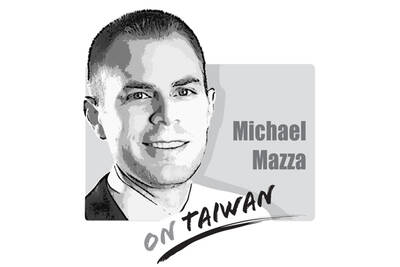Moody’s Investors Service last week affirmed Taiwan’s sovereign credit rating of “Aa3” and changed its credit outlook for the nation to “positive” from “stable,” which is not only a first since the ratings agency began covering Taiwan in 1994, but also a vote of confidence in the nation’s resilient economy and its good governance model, despite US-China trade tensions and the COVID-19 pandemic.
The government welcomed the move. The Ministry of Finance said that Moody’s affirmation reflects Taiwan’s strong fiscal discipline and effectiveness of restoring economic normalcy amid the pandemic, while the outlook upgrade indicates that the nation’s sovereign rating might be upgraded within a year.
The central bank said that the agency’s assessment suggests the nation’s ample foreign-exchange reserve and its flexible exchange rate regime strengthen the economy’s shock-absorption capacity and have enhanced its monetary and macroeconomic policy effectiveness. The assessment also points to the bank’s deployment of macroprudential measures last year to ease financial risks from elevated household debt and rising property prices in some areas, it said.
The Moody’s report is just the latest assessment from global institutions giving high marks to Taiwan. The International Institute for Management Development’s annual world competitiveness report, released in June last year, gave the nation its best rating since 2016, while the institute’s global digital competitiveness survey and the corporate governance rankings by the Asian Corporate Governance Association last year also gave Taiwan its best marks in the past few years, the Executive Yuan said last week.
Despite daunting challenges at home and abroad, Taiwan has managed to keep COVID-19 at bay, and the latest data show that the economy and stock markets are stronger than those of its regional peers. However, closer scrutiny reveals that economic development has been concentrated among a few high-tech industries, especially electronics, communications and semiconductors, while the nation’s overseas shipments are still centered on China.
CRIF China Credit Information Service Ltd last week said that the Taiwanese economy faces major risks in the long term, as its exports concentrate too much on intermediate goods, the electronics and communications industry, and the Chinese market.
According to CRIF, intermediate goods accounted for 77.1 percent of Taiwan’s exports last year, while outbound shipments of capital goods and consumer goods continued to fall to 13.4 percent and 8.9 percent respectively. Exports of electronics, communication and audiovisual products accounted for 53.51 percent of last year’s total exports, compared with the machinery industry’s 6.34 percent and the optical industry’s 3.41 percent.
China remained Taiwan’s largest export market, making up 43.9 percent of the total last year, higher than the US’ 14.6 percent, as many of the goods destined for the US were still from China, it said.
CRIF warned of an unbalanced development of local industries and urges the nation to transform its export structure. Although Taiwan’s industries would still face difficulty decoupling from China, it emphasized the importance for the nation to diversify its trading partners. If things remain unchanged, Taiwan would be vulnerable to changes in the global economic climate and political situation.
The US-China trade dispute and new trends driven by the pandemic have provided an opportunity for Taiwan’s electronics and communication industries, as well as its non-tech sectors, ranging from machinery and textiles to petrochemicals and others. To capitalize on it, the government needs to help weaker industries upgrade equipment and secure more resources, including access to funds. Otherwise, despite positive assessments by global institutions and pretty economic data, not all will feel satisfied with the nation’s economic and industrial development.
The government and local industries breathed a sigh of relief after Shin Kong Life Insurance Co last week said it would relinquish surface rights for two plots in Taipei’s Beitou District (北投) to Nvidia Corp. The US chip-design giant’s plan to expand its local presence will be crucial for Taiwan to safeguard its core role in the global artificial intelligence (AI) ecosystem and to advance the nation’s AI development. The land in dispute is owned by the Taipei City Government, which in 2021 sold the rights to develop and use the two plots of land, codenamed T17 and T18, to the
Taiwan’s first case of African swine fever (ASF) was confirmed on Tuesday evening at a hog farm in Taichung’s Wuci District (梧棲), trigging nationwide emergency measures and stripping Taiwan of its status as the only Asian country free of classical swine fever, ASF and foot-and-mouth disease, a certification it received on May 29. The government on Wednesday set up a Central Emergency Operations Center in Taichung and instituted an immediate five-day ban on transporting and slaughtering hogs, and on feeding pigs kitchen waste. The ban was later extended to 15 days, to account for the incubation period of the virus

The ceasefire in the Middle East is a rare cause for celebration in that war-torn region. Hamas has released all of the living hostages it captured on Oct. 7, 2023, regular combat operations have ceased, and Israel has drawn closer to its Arab neighbors. Israel, with crucial support from the United States, has achieved all of this despite concerted efforts from the forces of darkness to prevent it. Hamas, of course, is a longtime client of Iran, which in turn is a client of China. Two years ago, when Hamas invaded Israel — killing 1,200, kidnapping 251, and brutalizing countless others
US President Donald Trump has announced his eagerness to meet North Korean leader Kim Jong-un while in South Korea for the APEC summit. That implies a possible revival of US-North Korea talks, frozen since 2019. While some would dismiss such a move as appeasement, renewed US engagement with North Korea could benefit Taiwan’s security interests. The long-standing stalemate between Washington and Pyongyang has allowed Beijing to entrench its dominance in the region, creating a myth that only China can “manage” Kim’s rogue nation. That dynamic has allowed Beijing to present itself as an indispensable power broker: extracting concessions from Washington, Seoul